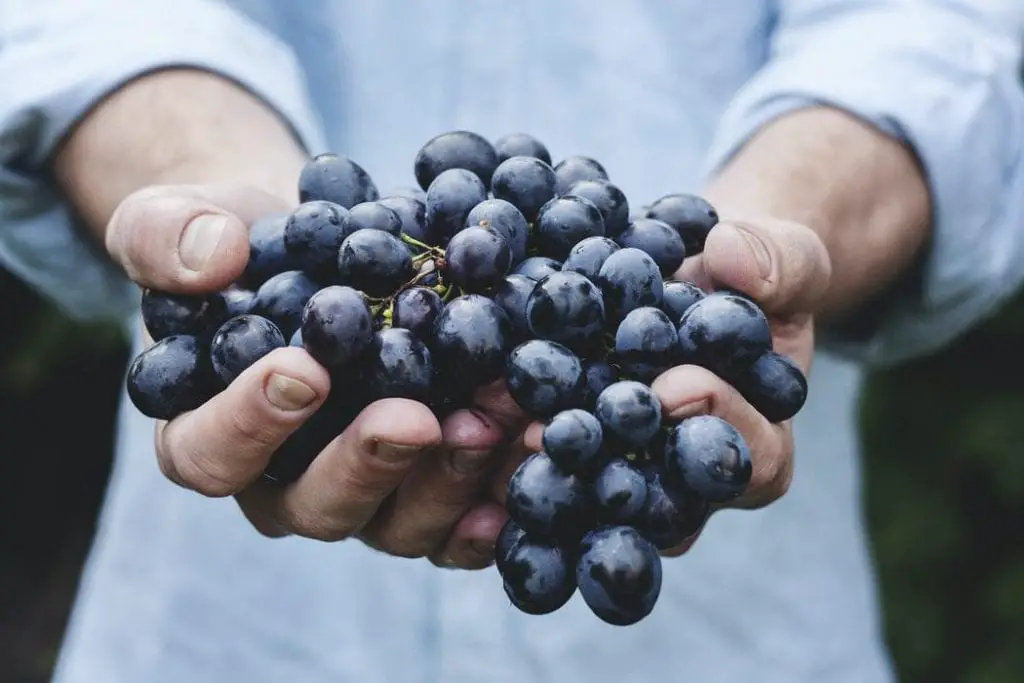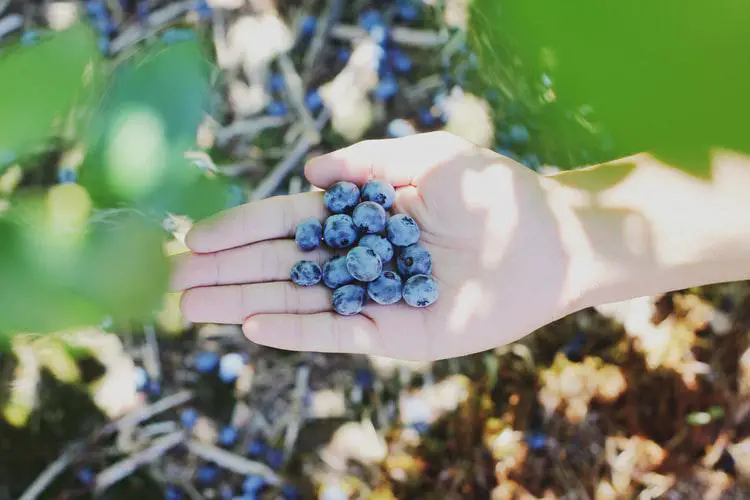Blue is not as common as the other colors in nature but the ones found are adorable. They are attractive and come with one or the other specialty. Blue objects, most of them in nature, are unique and carry with them special features and meaning. This article talks about some of the best and delicious blue fruits.
Blue fruits have derived their color from polyphenols, the plant compounds. To be specific, these fruits are rich in anthocyanins, a polyphenol group that gives blue color. However, there’s more to these plant compounds. Several studies have proven that besides offering the rich blue hue, polyphenols provide a ton of health benefits. You read that right. These plant compounds contribute to promoting heart health, reduce the risks associated with obesity, diabetes and other diseases.
Blue fruits are well known not only for their unique and delicious taste but the health benefits they offer as well. These fruits are rich sources of potent antioxidants, which can help you normalize and balance the functions of your internal organs and immune system. Each blue fruit found in nature comes loaded with distinctive qualities, and we recommend eating a variety of them to derive maximum benefits.
Here is a list of delicious blue fruits:
Blueberries
Blueberries are very tasty blue fruits loaded with rich nutrients. They are low on calories and rich in fiber. Most importantly, these fruits come with some of the most essential micronutrients like Vitamin C, K and manganese. Blueberries also come loaded with anthocyanins that help protect your cells from free radicals. Simply said, these are antioxidants that can safeguard your DNA from radical damage.
Regular intake of blueberries can also aid in preventing heart disease (these fruits promote artery function), cancer, type 2 diabetes and certain progressive nerve disorders such as Alzheimer’s. Some studies have also shown slower cognitive degeneration among population that regularly eats blueberries. To sum it up, these blue objects prevent cell damage and help you stay in good health. With such huge benefits, it is no wonder blueberries are considered a superfood!
Blackberries
Blackberries actually are not black. They are deep blue fruits loaded with a lot of essential nutrients. A small cup of blackberries offers the daily requirement of Vitamin C, manganese, fiber and vitamin K. Blackberries are packed with fructose and glucose but lesser calories, which makes them ideal for diabetic patients. The fruits are also rich in calcium, magnesium, iron, sodium, and phosphorous.
Vitamin K plays a vital role in blood clotting and is very important for bone health. There is a lot of research going on to establish the exact link between vitamin K and bone health but scientists widely believe a lack of this nutrient will lead to your bones becoming fragile. Vitamin K deficiency causes Osteoporosis, a bone disorder. While leafy green vegetables also provide vitamin K, blackberries top the list when it comes to fruits.
Blackberry fruit is a coolant, good for blood and helps prevent pimples, wrinkles, acne and blemishes. It is also loaded with several biochemical compounds like essential oils, flavonoids, oxalic acid and Gallic acid. The fruit avoids the hardening of arteries and is highly beneficial for controlling blood pressure and diabetes. This tasty fruit can also treat ulcers and promotes digestion.
Blue Figs
Blue figs have a pink pulp on the inner and a sweet taste. These fruits offer rich nutrition that aids digestion, promotes heart health and balances sugar levels in the blood. Figs are also low in calories, so you can make them a part of your regular diet. They are loaded with Vitamin B6 as well as copper. While Copper aids metabolism, energy production, blood cells and connective tissue formation, Vitamin B6 is good for brain health.
Elderberries
Elderberry is a blue-hued fruit that also comes with a light purple shade. The fruit is known to boost your immune system and help recover from illnesses such as cold and flu.
Elderberries are packed with Vitamin B6 and Vitamin C, both of which contribute to boosting your immune system. Research is being carried out to test the effect of concentrated elderberries extract on the flu virus. These delicious blue objects, however, should be cooked and not eaten raw. Some people have experienced an upset stomach after eating raw elderberries, especially the not-so-ripe ones.
These fruits are very delicious and can be readily used to fight flu symptoms. The purple-blue elderberries are increasingly being used worldwide as a plant remedy for cold. If you often suffer from cold/flu and looking for a natural simple remedy, elderberries can help you to a great extent.
Concord Grapes
Concord grapes are widely popular and can be eaten raw. These purple-blue hued fruits are also used to make jams, juices and wine. Concord grapes are rich in useful antioxidants, in fact these fruits have a higher percentage of the good plant compounds when compared to the red and green grapes. The antioxidants help promote your immune system while they also boost your brain health, mood and memory. Several small studies have been carried out to prove the multiple health benefits of consuming Concord grape juice, however, more research is still required.

Black Currants
Black currants are delicious fruits with a deep blue hue. These blue objects are used in dietary supplements while they can be eaten the way you like, raw, dried or in the form of juices and jams. Black currants are rich in vitamin C, a powerful antioxidant. Vitamin C boosts the immune system, protects you against chronic illnesses and safeguards your cells. Some studies have also proved that this nutrient offers protection against heart diseases to a certain extent. Further, Vitamin C aids in the healing of wounds, and maintenance of your teeth, bones and skin.
Damson Plums
Damson Plums are blue fruits that are widely used in jams. In most parts of the world, these blue fruits are also dried to make prunes.
Prunes are an effective remedy for constipation, an ailment suffered by over 14 percent of the population globally. Since they are high in fiber, eating them regularly soften your stools and help your bowel movements. Additionally, these fruits taste great and can satisfy your taste buds.
If you are experiencing digestive problems and searching for a plant remedy for the condition, we recommend eating Damson plums/prunes. The plant compounds increase your stool frequency, relieving you of the discomfort associated with the disorder.
Blue Tomatoes
Also called as Indigo Rose or Purple Tomatoes, blue tomatoes are rich in anthocyanins. In fact, it is this content that gives off the blue hue for this fruit. Foods with loads of anthocyanins help reduce inflammation, promote eye health besides protecting against certain heart ailments. Blue tomatoes are also packed with lycopene, an antioxidant compound found in red tomatoes. Lycopene rich foods reduce the risk of stroke, heart diseases and prostate cancer. These vibrant blue objects are one of the many nature’s blue wonders.
Passion Fruit
Passion fruit is a unique fruit with multiple nutritional and medicinal benefits. If you are looking for a healthy and tasty fruit to incorporate into your regular diet, the passion fruit is for you. The tasty fruit is rich in Vitamin C, fiber, Iron, Potassium and vitamin A. The wonder blue fruit enhances digestion, promotes immune function, boosts skin and eye health, improves blood circulation and lowers blood pressure. It is also said to help patients with gastrointestinal problems.
Passion fruits are grown all through the year in places where the temperatures are frost-free. Places with warm climate such as the South Pacific, the Middle East, Central America and the Mediterranean are ideal to grow the passion fruit. In recent times, this fruit is getting popular as a breakfast food. It is consumed as a snack as well.
Juneberry
These are blue objects with an amazing taste. You are going to like them if you love the taste of blueberries and apples. Juneberries are smaller than blueberries and purple-blue in color. Native to Canada and North-west U.S, Juneberries are superfoods and widely used today for processing jams and pies. These fruits can also be eaten raw.
Juneberries are moderately sweet and their flavor is described as being like almond and cherry. Don’t expect this fruit to give you an explosion of raspberry sweetness. These fruits contain rich antioxidants, Vitamin C, Manganese, Calcium and Potassium. Juneberries have antiviral properties and are anti-inflammatory.
Bottom line
Blue fruits, as said earlier, are rarely found in nature. Some blue fruits come with shades of purple while several others with shades of deep red and brown along with the dominant blue. Regardless of the shade accompanying the blue fruits, these foods are a source of Vitamins, Calcium, Potassium, Iron and antioxidants that help you fight several chronic diseases. Apart from their health benefits, these blue objects come with a fabulous taste and align with the preferences of a majority of the global population.
Now you know the delicious blue fruits with high nutritional content, try to incorporate some of them into your diet. Cater to your taste buds while staying healthy!




